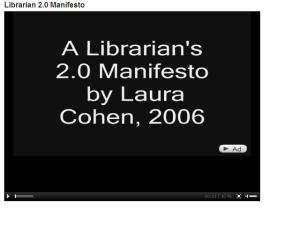Below is a post from one of our colleagues at CSU announcing the World Digital Library which ‘opens’ on April 21. Have a look and it would be marvellous to have some comments on the artefacts available for viewing as well as your thoughts on the use of such libraries in schools or anywhere. From what I can see from this press release I can’t wait for the ‘doors’ to open.
01-04-2009 (Paris)
© UNESCO
UNESCO and 32 partner institutions will launch the World Digital Library, a web site that features unique cultural materials from libraries and archives from around the world, at UNESCO Headquarters on 21 April. The site will include manuscripts, maps, rare books, films, sound recordings, and prints and photographs. It will provide unrestricted public access, free of charge, to this material.
The launch will take place at a reception co-hosted by UNESCO Director-General, Koïchiro Matsuura, and U.S. Librarian of Congress, James H. Billington. Directors of the partner institutions will also be on hand to present the project to ambassadors, ministers, delegates, and special guests attending the semi-annual meeting of UNESCO’s Executive Board.
Media are invited to attend a pre-launch press conference, which will take place at UNESCO Headquarters in Paris on 21 April at 11 a.m.
Mr Billington first proposed the creation of a World Digital Library (WDL) to UNESCO in 2005, remarking that such a project could “have the salutary effect of bringing people together by celebrating the depth and uniqueness of different cultures in a single global undertaking”. In addition to promoting international understanding, the project aims to expand the volume and variety of cultural content on the Internet, provide resources for educators, scholars and general audiences, and narrow the digital divide within and between countries by building capacity in partner countries.
The WDL will function in Arabic, Chinese, English, French, Portuguese, Russian and Spanish, and will include content in a great many other languages. Browse and search features will facilitate cross-cultural and cross-temporal exploration on the site. Descriptions of each item and videos with expert curators speaking about selected items will provide context for users, and are intended to spark curiosity and encourage both students and the general public to learn more about the cultural heritage of all countries.
The WDL was developed by a team at the Library of Congress. Technical assistance was provided by the Bibliotheca Alexandrina of Alexandria, Egypt. Institutions contributing content and expertise to the WDL include national libraries and cultural and educational institutions in Brazil, Egypt, China, France, Iraq, Israel, Japan, Mali, Mexico, Morocco, the Netherlands, Qatar, the Russian Federation, Saudi Arabia, Serbia, Slovakia, Sweden, Uganda, the United Kingdom, and the United States.
Examples of treasures that will be featured on the WDL include oracle bones and steles contributed by the National Library of China; Arabic scientific manuscripts from the National Library and Archives of Egypt; early photographs of Latin America from the National Library of Brazil; the Hyakumanto darani, a publication from the year 764 from the National Diet Library of Japan; the famous 13th century “Devil’s Bible” from the National Library of Sweden; and works of Arabic, Persian, and Turkish calligraphy from the collections of the Library of Congress.
One of UNESCO’s main mandates is to promote the free flow of all forms of knowledge in education, science, culture and communication. The Organization therefore supports initiatives to improve and increase content on the Internet. To this end, it collaborates with a range of partners on the creation of digital and other repositories.
 students indicate that independent school students have higher scores both on school tests and SAT tests. The author discusses the possible role that usage of the independent school library contributes to these outcomes.
students indicate that independent school students have higher scores both on school tests and SAT tests. The author discusses the possible role that usage of the independent school library contributes to these outcomes.








